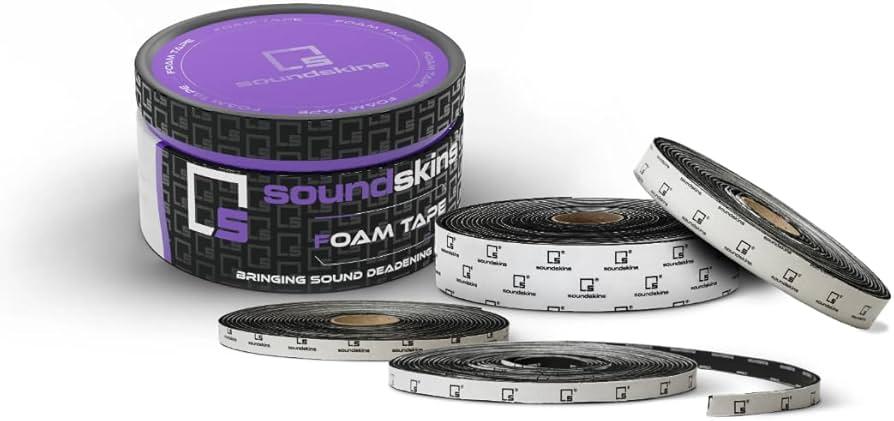Why Speaker Rings Are Essential for Optimal Sound Performance

When setting up a speaker system—whether it's in a vehicle, home theater, or studio—most people focus on the head unit, amplifier, and speaker size. But to truly maximize audio quality, attention to detail matters. One such detail that often gets ignored is the use of speaker rings—a small yet powerful addition that can significantly improve your system’s acoustic performance.
These simple components help solve common sound issues like panel vibration, sound wave cancellation, and poor mounting stability. Despite their low profile, speaker rings play a high-impact role in delivering clean, focused audio.
What Are Speaker Rings?
Speaker rings, also known as speaker baffles or gaskets, are typically made from foam, MDF (medium-density fiberboard), or rubber. They are placed between the speaker and the mounting surface to provide a secure seal and reduce unwanted resonance or vibrations.
Depending on the application, speaker rings can serve different functions:
-
Foam rings are used to focus and direct sound waves.
-
MDF rings are often used as spacers for better speaker fitment.
-
Rubber or neoprene rings offer vibration dampening and durability.
Why You Should Use Speaker Rings
Many speaker systems suffer from audio loss not because of bad equipment, but due to poor installation and air gaps. Here's how speaker rings help address that:
1. Better Sound Isolation
They seal the space between the speaker and the mounting surface, reducing sound wave leakage and improving overall clarity.
2. Reduced Rattle and Distortion
By absorbing vibrations that would otherwise travel into thin panels (like car doors), speaker rings help maintain cleaner, distortion-free audio.
3. Improved Midbass and Imaging
A proper acoustic seal enhances bass response and stereo imaging, particularly noticeable in car audio and home theater systems.
4. Custom Fitment and Spacing
MDF speaker rings can also serve as spacers to help fit larger speakers into factory enclosures without cutting or modifying the vehicle.
Where to Use Speaker Rings
Speaker rings are useful in a variety of environments:
-
Automotive Installations: Doors, rear decks, or kick panels benefit greatly from foam or MDF speaker rings.
-
Home Audio: In-wall or ceiling-mounted speakers get a boost in clarity and reduced echo when rings are used.
-
Recording Studios: Critical listening environments use speaker rings to eliminate any interference caused by surface vibration.
Types of Speaker Rings and Their Purpose
| Type | Best For | Material |
|---|---|---|
| Foam Rings | Sound direction, mid-bass improvement | Closed-cell foam |
| MDF Spacer Rings | Mounting, depth adjustment | MDF |
| Rubber Gasket Rings | Vibration control, durability | Rubber/Neoprene |
Installation Tips
Installing speaker rings is simple but requires precision:
-
Clean the surface where the ring will be applied.
-
Align the ring to match the speaker’s footprint.
-
Attach the ring using adhesive (foam) or screws (MDF).
-
Mount the speaker securely on top, ensuring a tight fit.
Taking just a few extra minutes to install speaker rings during your setup can lead to noticeable improvements in performance.
Final Thoughts
If you’re serious about audio quality, don’t overlook the impact of speaker rings. They may be small, but they offer big benefits—from enhanced clarity and reduced rattles to better bass response and tighter speaker fitment.
Whether you're installing a premium car audio setup, building a custom home theater, or fine-tuning a studio, speaker rings are a low-cost, high-reward addition that any audio enthusiast should consider.
- Information Technology
- Office Equipment and Supplies
- Cars and Trucks
- Persons
- Books and Authors
- Tutorials
- Art
- Causes
- Crafts
- Dance
- Drinks
- Film
- Fitness
- Food
- Juegos
- Gardening
- Health
- Home
- Literature
- Music
- Networking
- Other
- Party
- Religion
- Shopping
- Sports
- Theater
- Wellness


